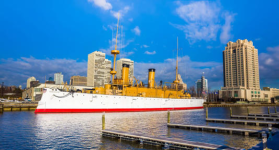Brains_N_Boobs
Literotica Guru
- Joined
- Nov 3, 2006
- Posts
- 35,208
Follow along with the video below to see how to install our site as a web app on your home screen.
Note: This feature may not be available in some browsers.
I can understand some of the small boats having accidents, because you can buy a boat and go without any formal training, so any idiot can be at the helm. However, with these big ships, it's confusing as it takes years to become a Captain and it takes years of training and tests that you have to pass.
Looks like it could be the ship from Joseph Conrad's 'Heart of Darkness'...
Great picture!
I suspect most of them just did it over the side, although there would be a line for that too. What and where is that, anyway? South Asia?Great picture!
(And that is just the line for the head....)
Looks more like a painting than real.
troops coming home to the US from Europe at the end of WWII. You can do a google search for images and see lots of ships that were overloaded like this coming home.I suspect most of them just did it over the side, although there would be a line for that too. What and where is that, anyway? South Asia?
Thanks, I found that this is the Queen Elizabeth entering New York harbor. I guess the only thing that made in bearable was that, with everybody topside to see the sights, it wasn't equally crowded below decks. Still, with maybe 15,000 people on a ship designed for about 2,300, it couldn't have been very comfortable.troops coming home to the US from Europe at the end of WWII. You can do a google search for images and see lots of ships that were overloaded like this coming home.

These cruise ships are like floating buildings. They make up for their operating costs by carrying huge numbers of passengers. After the pandemic, some of the older, slighter smaller ship were sold and dismantled. Thirty years or so is about the useful life of most passenger ships anyway.